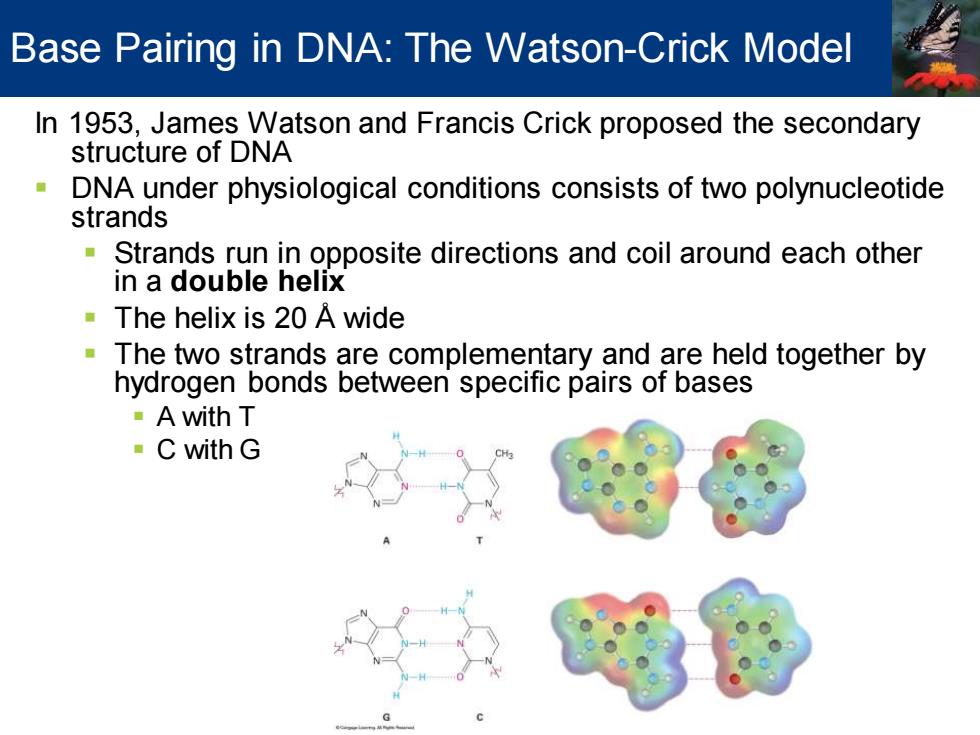
Base Pairing in DNA:The Watson-Crick Model In 1953,James Watson and Francis Crick proposed the secondary structure of DNA m DNA under physiological conditions consists of two polynucleotide strands Strands run in opposite directions and coil around each other in a double helix The helix is 20 A wide The two strands are complementary and are held together by hydrogen bonds between specific pairs of bases A with T C with G
In 1953, James Watson and Francis Crick proposed the secondary structure of DNA ▪ DNA under physiological conditions consists of two polynucleotide strands ▪ Strands run in opposite directions and coil around each other in a double helix ▪ The helix is 20 Å wide ▪ The two strands are complementary and are held together by hydrogen bonds between specific pairs of bases ▪ A with T ▪ C with G Base Pairing in DNA: The Watson-Crick Model
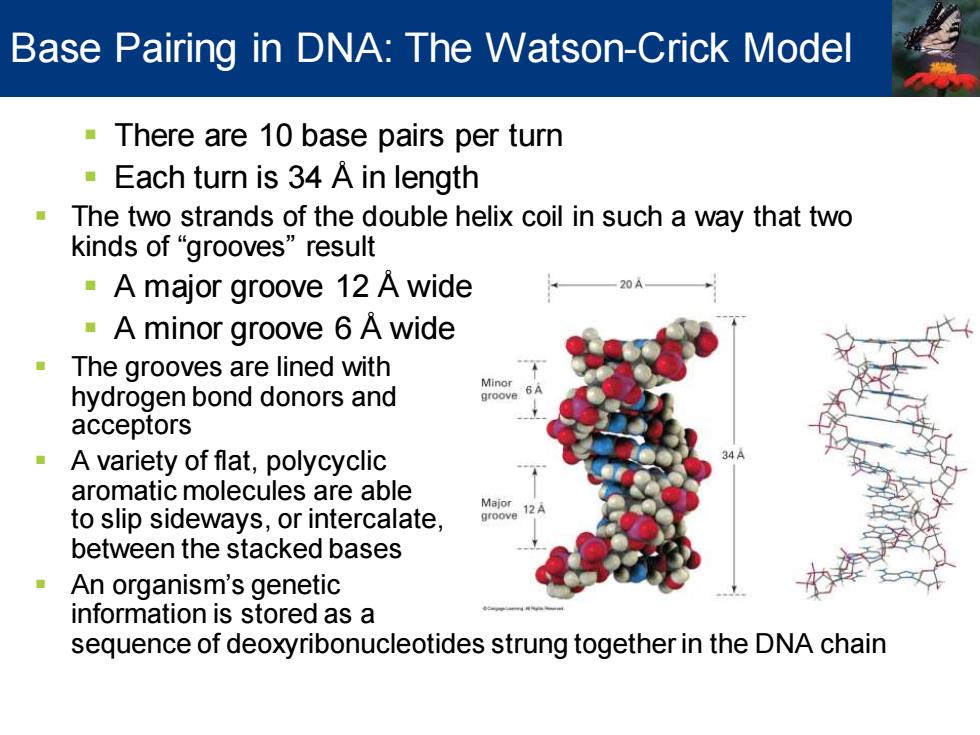
Base Pairing in DNA:The Watson-Crick Model There are 10 base pairs per turn Each turn is 34 A in length The two strands of the double helix coil in such a way that two kinds of“grooves”result A major groove 12 A wide 20 A minor groove 6 A wide -The grooves are lined with Minor hydrogen bond donors and groove acceptors A variety of flat,polycyclic aromatic molecules are able Major to slip sideways,or intercalate, groove 12 A between the stacked bases An organism's genetic information is stored as a sequence of deoxyribonucleotides strung together in the DNA chain
▪ There are 10 base pairs per turn ▪ Each turn is 34 Å in length ▪ The two strands of the double helix coil in such a way that two kinds of “grooves” result ▪ A major groove 12 Å wide ▪ A minor groove 6 Å wide ▪ The grooves are lined with hydrogen bond donors and acceptors ▪ A variety of flat, polycyclic aromatic molecules are able to slip sideways, or intercalate, between the stacked bases ▪ An organism’s genetic information is stored as a sequence of deoxyribonucleotides strung together in the DNA chain Base Pairing in DNA: The Watson-Crick Model
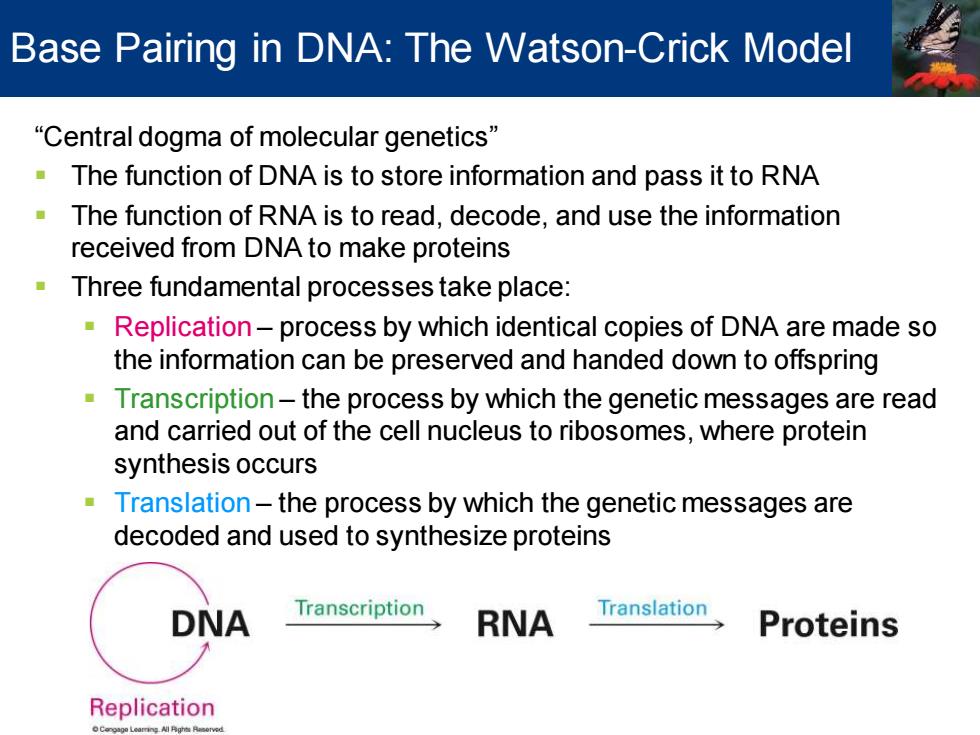
Base Pairing in DNA:The Watson-Crick Model “Central dogma of molecular genetics” The function of DNA is to store information and pass it to RNA The function of RNA is to read,decode,and use the information received from DNA to make proteins Three fundamental processes take place: Replication-process by which identical copies of DNA are made so the information can be preserved and handed down to offspring Transcription-the process by which the genetic messages are read and carried out of the cell nucleus to ribosomes,where protein synthesis occurs Translation-the process by which the genetic messages are decoded and used to synthesize proteins DNA Transcription RNA Translation Proteins Replication
“Central dogma of molecular genetics” ▪ The function of DNA is to store information and pass it to RNA ▪ The function of RNA is to read, decode, and use the information received from DNA to make proteins ▪ Three fundamental processes take place: ▪ Replication – process by which identical copies of DNA are made so the information can be preserved and handed down to offspring ▪ Transcription – the process by which the genetic messages are read and carried out of the cell nucleus to ribosomes, where protein synthesis occurs ▪ Translation – the process by which the genetic messages are decoded and used to synthesize proteins Base Pairing in DNA: The Watson-Crick Model
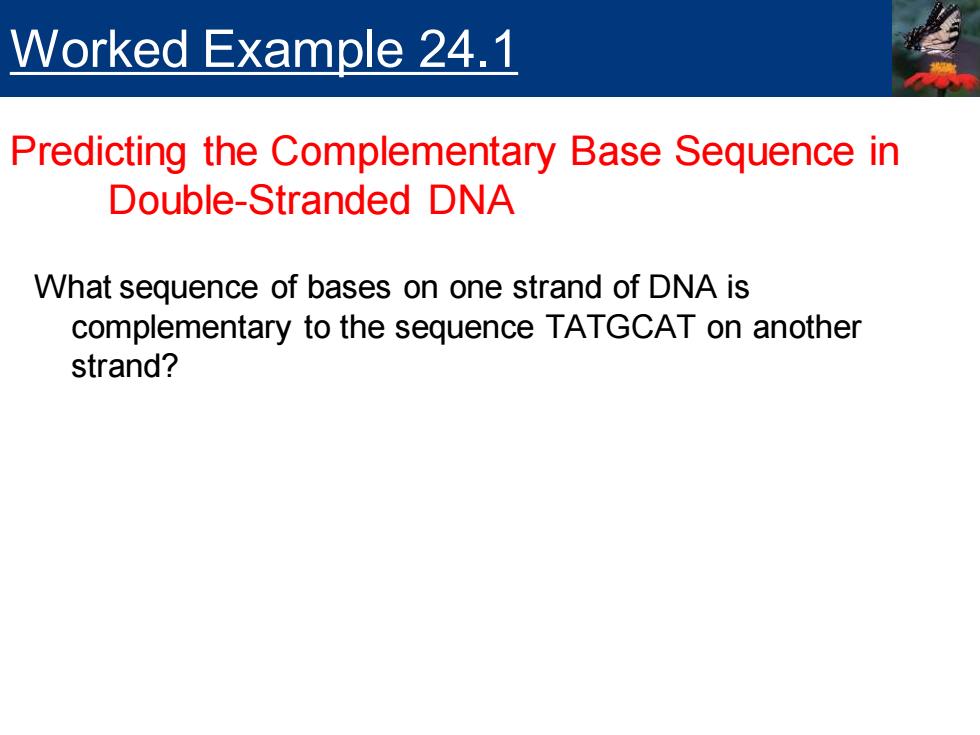
Worked Example 24.1 Predicting the Complementary Base Sequence in Double-Stranded DNA What sequence of bases on one strand of DNA is complementary to the sequence TATGCAT on another strand?
What sequence of bases on one strand of DNA is complementary to the sequence TATGCAT on another strand? Worked Example 24.1 Predicting the Complementary Base Sequence in Double-Stranded DNA
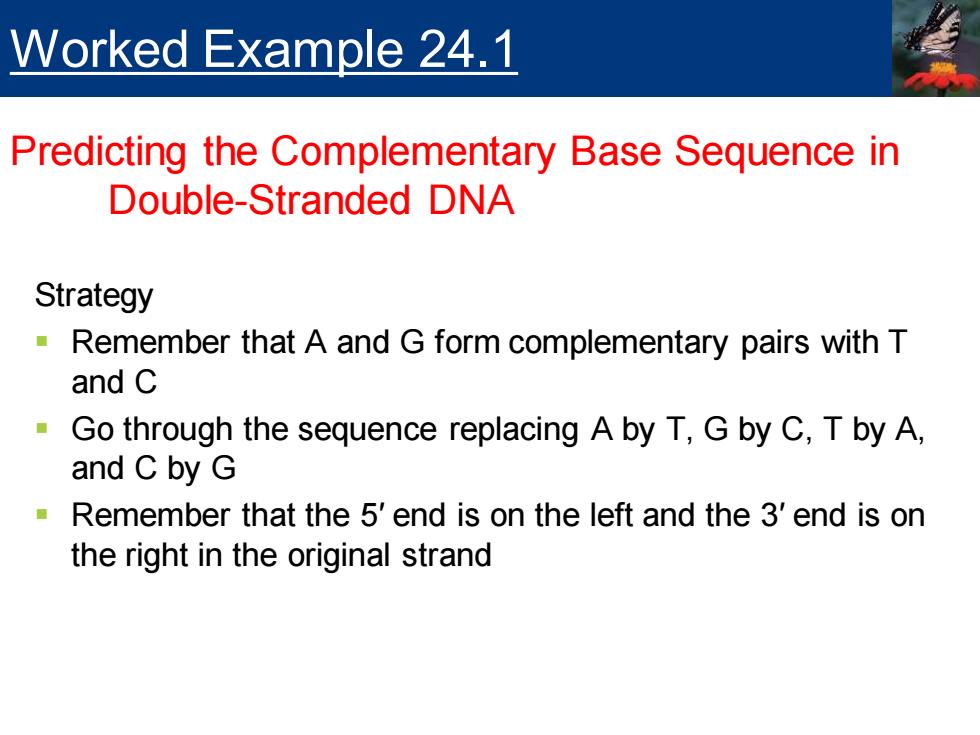
Worked Example 24.1 Predicting the Complementary Base Sequence in Double-Stranded DNA Strategy Remember that A and G form complementary pairs with T and C Go through the sequence replacing A by T,G by C,T by A, and C by G Remember that the 5'end is on the left and the 3'end is on the right in the original strand
Strategy ▪ Remember that A and G form complementary pairs with T and C ▪ Go through the sequence replacing A by T, G by C, T by A, and C by G ▪ Remember that the 5′ end is on the left and the 3′ end is on the right in the original strand Worked Example 24.1 Predicting the Complementary Base Sequence in Double-Stranded DNA